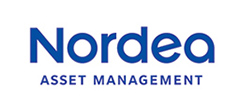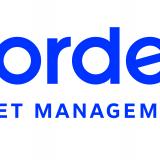
By Asbjørn Trolle Hansen, head of the Multi Assets Team at Nordea Asset Management
Investors have experienced several periods of severe market turbulence since the global financial crisis – most notably the European sovereign debt crisis—the ‘taper tantrum’—and the initial stages of the Covid-19 pandemic. Fortunately, the sharp drawdowns proved on each occasion to be temporary, and the bull run for stocks and bonds ultimately resumed.
With numerous asset classes performing positively in unison since 2009, most multi-asset approaches – including the traditional 60/40 portfolio – largely delivered on long-term investor return objectives. In addition, due to the largely sanguine environment during the 2010s, portfolio diversification – which is perhaps the primary attribute of a multi-asset solution – was only infrequently put to the test.
However, as turmoil swept through markets last year sparked by aggressive central bank action to tame inflation; traditional diversification methods were regrettably found wanting. Historically, fixed income has been the investor instrument of choice to mitigate equity market downside. But many investors were left with nowhere to turn when both stocks and bonds sold off aggressively in tandem during most of 2022. By the end of the year, bonds had suffered the worst year in history, while most major equity markets remained firmly in the red. In our view, traditional diversification has for some time not been able to protect investors to the extent it once did. The ‘correlation perfect storm’ we witnessed last year was a painful reminder of this.
The limits of traditional diversification
If traditional asset class diversification has reached its limits, investors can look to adopt differentiated approaches to balancing risk – such as the opportunities available in alternative risk premia. We believe investors can capitalise on both cyclical and anti-cyclical return drivers from a broad and diversified set of 30 risk premia spread across strategy types and asset classes. For example, as an alternative to traditional government bonds in recent years, we have utilised areas such as currency-related risk premia. Attractively valued currencies can provide pleasantly defensive characteristics – the simplest example being the Japanese yen versus the euro. While risk assets have enjoyed a strong start to 2023, bouts of heightened turbulence are likely to become a feature of the market environment for the foreseeable future, as central banks continue to hike rates in an attempt to cool inflation and the damaging war in Ukraine rages on.
Stability is set to return to the spotlight
Despite these challenges, it is not all doom and gloom for investors. At the beginning of 2022, expectations for equity beta and duration risk premia were 4.5% and 0.3% per annum, respectively. However, because of the events of last year, this has now increased to 6.3% and 1.4% per annum. We are particularly optimistic on Stable/Low Risk Equities, which have demonstrated an ability to perform through periods of heightened volatility – as well as periods of elevated inflation. As is commonly known, equities offer the highest return potential within a multi-asset strategy, but the asset class is also the greatest source of risk. Therefore, it makes sense to identify companies displaying a greater degree of solidity in stock price, earnings, dividends, EBITDA and cash flow than the broader market.
In our view, stable, high quality and attractively valued companies – which historically offer more resilient earnings – are naturally in a far better position to navigate through this continually challenging economic backdrop. In addition, we look for companies exhibiting pricing power, which have the ability to pass on inflation price increases. This is a valuable characteristic in the current climate. Also, Stable/Low Risk Equities continue to offer a 1.4% earnings yield premium versus the broader market. This is an incredibly attractive building block for portfolios in the months and years to come.
About Nordea Asset Management
Nordea Asset Management (NAM, AuM 239bn EUR*), is part of the Nordea Group, the largest financial services group in the Nordic region (AuM 359bn EUR*). NAM offers European and global investors exposure to a broad set of investment funds. We serve a wide range of clients and distributors which include banks, asset managers, independent financial advisors and insurance companies.
Nordea Asset Management has a presence in Bonn, Brussels, Copenhagen, Frankfurt, Helsinki, Lisbon, London, Luxembourg, Madrid, Milan, New York, Oslo, Paris, Santiago de Chile, Singapore, Stockholm, Vienna and Zurich. Nordea's local presence goes hand in hand with the objective of being accessible and offering the best service to clients.
Nordea’s success is based on a sustainable and unique multi-boutique approach that combines the expertise of specialised internal boutiques with exclusive external competences allowing us to deliver alpha in a stable way for the benefit of our clients. NAM solutions cover all asset classes from fixed income and equity to multi asset solutions, and manage local and European as well as US, global and emerging market products.
*Source: Nordea Investment Funds, S.A., 31.12.2022
Nordea Asset Management is the functional name of the asset management business conducted by the legal entities Nordea Investment Funds S.A. and Nordea Investment Management AB (“the Legal Entities”) and their branches and subsidiaries. This document is advertising materialand is intended to provide the reader with information on Nordea’s specific capabilities. This document (or any views or opinions expressed in this document) does not amount to an investment advice nor does it constitute a recommendation to invest in any financial product, investment structure or instrument, to enter into or unwind any transaction or to participate in any particular trading strategy. This document is not an offer to buy or sell, or a solicitation of an offer to buy or sell any security or instruments or to participate to any such trading strategy. Any such offering may be made only by an Offering Memorandum, or any similar contractual arrangement. Consequently, the information contained herein will be superseded in its entirety by such Offering Memorandum or contractual arrangement in its final form. Any investment decision should therefore only be based on the final legal documentation, without limitation and if applicable, Offering Memorandum, contractual arrangement, any relevant prospectus and the latest Key Investor Information Document (where applicable) relating to the investment. The appropriateness of an investment or strategy will depend on an investor’s full circumstances and objectives. Nordea Investment Management AB recommends that investors independently evaluate particular investments and strategies as well as encourages investors to seek the advice of independent financial advisors when deemed relevant by the investor. Any products, securities, instruments or strategies discussed in this document may not be suitable for all investors. This document contains information which has been taken from a number of sources. While the information herein is considered to be correct, no representation or warranty can be given on the ultimate accuracy or completeness of such information and investors may use further sources to form a well-informed investment decision. Prospective investors or counterparties should discuss with their professional tax, legal, accounting and other adviser(s) with regards to the potential effect of any investment that they may enter into, including the possible risks and benefits of such investment. Prospective investors or counterparties should also fully understand the potential investment and ascertain that they have made an independent assessment of the appropriateness of such potential investment, based solely on their own intentions and ambitions. Investments in derivative and foreign exchange related transactions may be subject to significant fluctuations which may affect the value of an investment. Investments in Emerging Markets involve a higher element of risk. The value of the investment can greatly fluctuate and cannot be ensured. Investments in equity and debt instruments issued by banks could bear the risk of being subject to the bail-in mechanism (meaning that equity and debt instruments could be written down in order to ensure that most unsecured creditors of an institution bear appropriate losses) as foreseen in EU Directive 2014/59/EU. Nordea Asset Management has decided to bear the cost for research, i.e. such cost is covered by existing fee arrangements (Management-/Administration-Fee). Published and created by the Legal Entities adherent to Nordea Asset Management. The Legal Entities are licensed and supervised by the Financial Supervisory Authority in Sweden and Luxembourg respectively. A summary of investor rights is available in English through the following link: https://www.nordea.lu/documents/engagement-policy/EP_eng_INT.pdf/. The Legal Entities’ branches and subsidiaries are licensed as well as regulated by their local financial supervisory authority in their respective country of domiciliation. Source (unless otherwise stated): Nordea Investment Fund S.A. Unless otherwise stated, all views expressed are those of the Legal Entities adherent to Nordea Asset Management and any of the Legal Entities’ branches and subsidiaries. This document may not be reproduced or circulated without prior permission. Reference to companies or other investments mentioned within this document should not be construed as a recommendation to the investor to buy or sell the same but is included for the purpose of illustration. The level of tax benefits and liabilities will depend on individual circumstances and may be subject to change in the future. © The Legal Entities adherent to Nordea Asset Management and any of the Legal Entities’ branches and/or subsidiaries.



